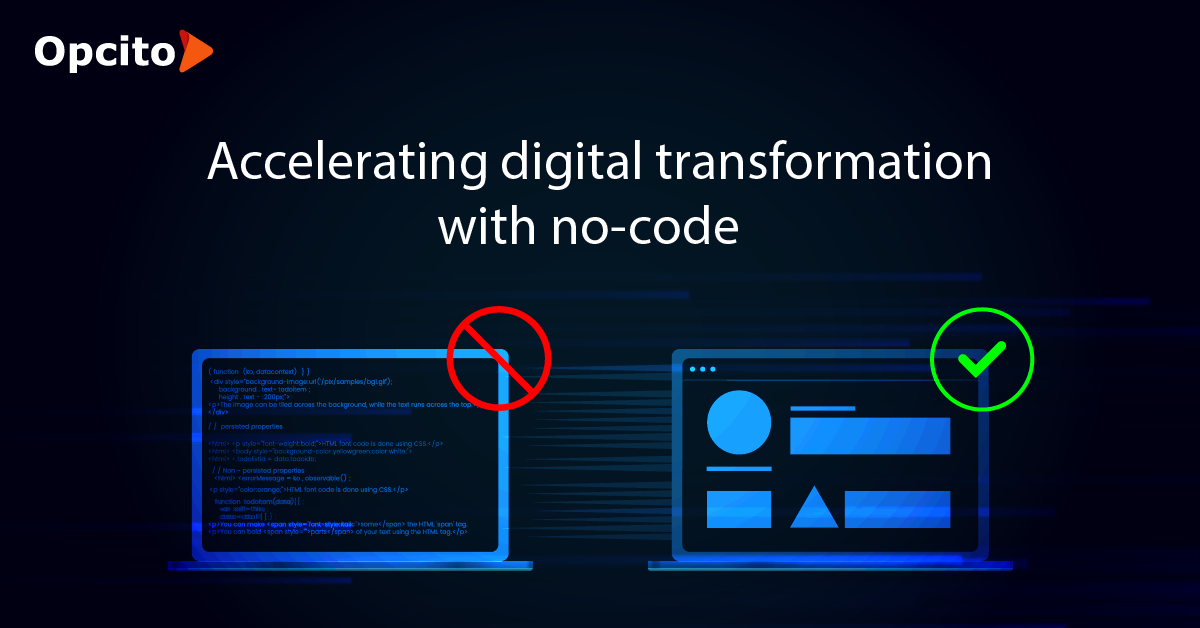
Blueprints are static. They’re a zoomed-in, detailed view of the new architecture you’re building and can’t change easily. They’re a picture of what your future will look like after digital transformation. But they aren’t that transformation itself. Think about how many times you’ve seen a new business process implemented in an old system with duct tape and new fields added to databases and code to accommodate it.
Or perhaps you work for an organization that has invested in several homegrown systems because none of their vendors could meet all their needs out of the box with one solution. And yet, when you hear “digital transformation,” it often comes with images of tablet POS stations and mobile check-in kiosks — not a sea change in how an entire company operates from end to end. This is why low-code and no-code apps are so important for digital transformation: They allow you to build the processes that will make your future self more efficient than your current self – not just build the final result of those efficiencies.
What Are Low-Code and No-Code Apps?
A Low code development or no-code app is one that you don’t have to write any code to create the workflow. A person with no programming skills can use the app builder to create the workflow the way a customer does. The business process is set up visually just like building a Lego model.
Drag and drop fields or sections of the workflow and click Next and Save. You don’t have to know how to write code to add fields to a database to store data or do calculations. The low-code app builder uses a visual, drag-and-drop interface for novices and an API (application programming interface) for the IT team to create the tables and data structures and add the logic that runs behind the scenes. The no-code app builder takes it a step further and uses an API to create the workflow itself.
Why Low-Code and No-Code Apps?
Many businesses are under the impression they have to build everything from scratch because they have highly specialized and unique needs and can’t find a vendor that can meet all their requirements out of the box with one solution. That’s particularly true in the case of SaaS vendors.
You may have heard the terms “low-code” or “no-code” in relation to application development, but you might not understand what they mean and why they’re important for digital transformation. The key here is that you can use the app builder to create the workflow the way a customer does and doesn’t require any programming skills on your part. The business process is set up visually just like building a Lego model. Drag and drop fields or sections of the workflow and click Next and Save. You don’t have to know how to write code to add fields to a database to store data or do calculations.
Digital Transformation Is About Operational Efficiency
Digital transformation is not just about apps, customer experience, and customer engagement. When we talk about digital transformation, we are actually talking about a major shift in the way businesses operate and what they deliver to customers.
For example, customer service agents may have been using a low-code or no-code app to onboard new customers and add new products to their inventory by dragging and dropping fields. The customer service agents may have even been using the app to onboard new employees, creating their new hire forms as if they were designing a quiz. To make it possible to plug these apps into their existing systems, the vendor will use an API.
For example, if the customer service agents were using an app that created a customer record, the app would query the customer database for the customer’s name, address, and other information.
The Importance of Data in Digital Transformation
Some organizations may have bought into the hype that customer experience is more important than operational efficiency. Don’t get me wrong: Customer experience is critical to keeping your customers. But if you have to send the customer’s information back and forth between systems – or have the systems talk to each other – you’re losing time and money.
If there’s a better way, wouldn’t you want to know about it? The vendor could use an API to create a master customer database with a unique identifier, such as a customer’s phone number, email address, or social security number. The vendors could then use their APIs to talk to the master database.
How Low-Code and No-code Apps Help with Digital Transformation
If you’ve gotten this far and you’re still wondering how low-code and no-code apps help with digital transformation, it’s time to put your thinking cap on. The vendors have done all the hard work. They have created the APIs and master databases and have probably even built the low-code and no-code apps themselves. The vendors have made it as easy as possible for your organization to plug the apps into your systems and are using the APIs to share information between the systems.
Bottom line
Bottom line, if you want to make the most of digital transformation and make your future self more efficient than your current self, low-code and no-code apps are critical. You will save time and money by plugging the apps into your systems and making the most of the APIs. With a low-code or no-code app, you don’t have to wait for the IT team to build a solution and then implement it. You can plug the app into your current systems and start using it immediately – and you’re probably already using it to onboard new customers.
Also Read: What Specifications Make You Prefer Facebook For Business Betterment.






